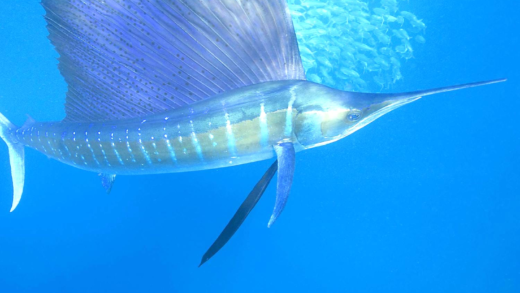Corn snakes are friendly, low-maintenance pets suitable for beginners. Understanding their behavior and care requirements enhances the experience of ownership. Proper handling techniques build trust, while interesting traits make them engaging companions. With proper care, corn snakes can live long, fulfilling lives.
Why Corn Snakes Make Great Pets
Corn snakes as pets are increasingly popular due to their friendly nature and low maintenance needs. These snakes are known for their docile temperament, making them an excellent choice for both novice and experienced reptile owners. Unlike some other snake species, corn snakes rarely bite and are generally easy to handle. This characteristic makes them a favorite among families with children and first-time reptile enthusiasts.
Moreover, corn snakes require less complex care compared to many other reptiles. Their diet primarily consists of mice or rats, which are easy to source. The setup for their habitat is straightforward, needing minimal adjustments once established. With the right conditions, they thrive, making them a practical choice for those looking for a pet that is not overly demanding.
Understanding Corn Snake Behavior in Captivity
Understanding corn snake behavior in captivity is crucial for ensuring they thrive in a home environment. These snakes are primarily nocturnal, which means they are most active during the night. Owners often observe their corn snakes exploring their enclosures after dark, showcasing their natural curiosity and intelligence.
Social interactions among corn snakes are limited; they do not require companionship to feel secure. In fact, they often prefer solitude. However, they can recognize their owners and may become accustomed to handling. Regular interaction can help build trust, making handling easier over time. Additionally, corn snakes exhibit a range of behaviors, such as burrowing and climbing, reflecting their natural instincts.
Exploring Color Morphs of Corn Snakes
Corn snakes come in a variety of stunning color morphs, which is another reason they captivate reptile enthusiasts. These color patterns can range from the classic orange and black to more exotic combinations like lavender, snow, or even caramel. Each morph has its own appeal, often dictated by genetic variations.
For pet owners, understanding these color morphs can enhance the experience of choosing a corn snake. Some morphs may also command higher prices in the market, reflecting their rarity. Knowing the differences can help owners make informed decisions based on aesthetic preference and budget.
Corn Snakes and Their Love for Barns and Rodents
Corn snakes have a natural affinity for barns and rodents, reflecting their history as effective pest controllers on farms. In the wild, they are often found in agricultural areas, where they hunt for mice and other small rodents. This instinct plays a significant role in their behavior and habitat preferences.
Understanding this aspect of corn snake behavior can help owners create a more enriching environment. Providing climbing structures and hiding spots in their enclosures mimics their natural habitat, allowing them to express their instincts. Owners may also notice their snakes exhibiting hunting behaviors, such as stalking and striking at prey during feeding times.
Basic Care Requirements for Corn Snakes
Basic care requirements for corn snakes are essential for their health and well-being. First, their enclosure should be spacious enough to allow for movement and exploration. A 20-gallon tank is a good starting point for adults, but larger is always better. Proper temperature is crucial; the basking area should be around 85°F, while the cooler side should be about 75°F. This gradient allows the snake to thermoregulate effectively.
Humidity levels should be maintained between 40-60%, with regular monitoring to prevent shedding issues. A substrate that allows burrowing, like aspen shavings or paper towels, is ideal. Lastly, providing a hiding spot is vital for their sense of security, helping to reduce stress in captivity.
Choosing the Right Enclosure Size for Your Corn Snake
Choosing the right enclosure size for your corn snake is crucial for its health and happiness. Corn snakes as pets thrive in environments that allow them to explore and feel secure. A good starting point for an adult corn snake is a 20-gallon tank, but bigger is always better. Here are some guidelines to help you:
- Young Corn Snakes: Hatchlings can comfortably live in a smaller enclosure, around 10-15 gallons, until they grow larger.
- Adult Corn Snakes: For adults, a 40-gallon tank is ideal, providing ample space to move around.
- Vertical Space: Corn snakes enjoy climbing, so adding height to the enclosure is beneficial.
- Secure Lid: Ensure the enclosure has a secure lid to prevent escapes, as corn snakes are known for their escape artistry.
Ultimately, the size of the enclosure should accommodate the snake’s activity levels and allow for the necessary heating and hiding spots. A well-sized enclosure promotes a healthy lifestyle, reducing stress and encouraging natural behaviors.
What Do Corn Snakes Eat? Feeding Frequency Explained
Corn snakes have a straightforward diet, primarily consisting of rodents. Their diet is a key component of corn snake care requirements. When considering corn snake diet and feeding frequency, here are some essential points:
- Prey Size: The size of the prey should be about the same diameter as the snake’s body at its widest point.
- Feeding Frequency: Hatchlings typically eat every 5-7 days, while adults can be fed every 7-10 days.
- Types of Prey: Mice are the most common food choice, but rats can be offered to larger snakes.
- Feeding Method: It’s best to feed pre-killed prey to reduce the risk of injury to your snake.
Understanding the dietary needs of corn snakes ensures they remain healthy and active. Regular feeding schedules will help maintain their well-being and vitality.
Are Corn Snakes Suitable for Beginner Reptile Owners?
Corn snakes are often recommended for beginner reptile owners. Their friendly demeanor and manageable care requirements make them an excellent choice for novices. Here are some reasons why corn snakes are suitable:
- Docile Nature: Corn snakes are known for their calm behavior, making them easy to handle and interact with.
- Low Maintenance: They require minimal care compared to other reptiles, making them less intimidating for new owners.
- Accessible Resources: Information on corn snake care is widely available, providing support for new owners.
- Affordability: They are generally inexpensive to acquire and maintain, appealing to those just starting out.
By choosing a corn snake, beginner reptile owners can enjoy the experience of pet ownership without overwhelming challenges.
Lifespan of Corn Snakes in Captivity
The lifespan of corn snakes in captivity can reach up to 20 years or more with proper care. This impressive longevity is one of the reasons they are favored as pets. Factors influencing their lifespan include:
- Diet Quality: A well-balanced diet leads to better health and longevity.
- Habitat Conditions: Maintaining appropriate temperature, humidity, and space in their enclosure is vital.
- Regular Veterinary Care: Routine check-ups can help catch potential health issues early.
- Stress Management: Providing hiding spots and minimizing handling during stressful times will enhance their quality of life.
With attention to these factors, corn snakes can thrive and live long, fulfilling lives, making them a rewarding choice for pet owners.
Handling Your Corn Snake Safely
Corn snakes as pets require careful handling to build trust and ensure safety for both the snake and the owner. Here are some tips on how to safely interact with your corn snake:
- Approach Calmly: Always approach your corn snake slowly and calmly. Sudden movements can startle them.
- Support Their Body: When lifting your snake, support its entire body. Hold it gently but firmly to prevent it from wriggling away.
- Use Both Hands: Use both hands to support your snake, especially if it is longer. This will help it feel secure.
- Let Them Explore: Allow your corn snake to explore your hands or the surrounding area while keeping a watchful eye to ensure they don’t escape or fall.
- Limit Handling Time: Initially, keep handling sessions short. Gradually increase the time as your snake becomes more comfortable with you.
Building trust takes time, so be patient. Over time, your corn snake will learn to associate you with positive experiences, making handling easier.
Interesting Facts About Corn Snakes
Corn snakes are fascinating creatures with a variety of interesting traits that appeal to reptile enthusiasts. Here are some fun facts:
- Color Variety: Corn snakes exhibit a wide range of color morphs, from bright oranges to deep reds and even blues, making them visually striking pets.
- Excellent Climbers: They are great climbers and often enjoy exploring vertical spaces in their enclosures.
- Natural Pest Control: Historically, corn snakes were valued by farmers for their role in controlling rodent populations around barns.
- Docile Temperament: Known for their gentle nature, corn snakes rarely bite unless provoked, which makes them ideal pets for families.
- Hibernation Behavior: In colder climates, corn snakes may enter a state of brumation (similar to hibernation) during the winter months.
These facts not only highlight their unique characteristics but also enhance the enjoyment of owning a corn snake.
Final Thoughts on Keeping Corn Snakes
Owning a corn snake can be a rewarding experience. These reptiles are friendly, low-maintenance, and have unique personalities that make them engaging companions. Key considerations include:
- Care Requirements: Ensure you understand their habitat, dietary needs, and health care.
- Longevity: With proper care, corn snakes can live for over 20 years, making them a long-term commitment.
- Handling and Interaction: Regular, gentle handling can help build a bond between you and your snake.
- Enrichment: Providing an enriching environment with climbing structures and hiding spots will keep your corn snake happy and healthy.
By understanding their behavior and needs, you can create a thriving environment for your corn snake, ensuring a fulfilling pet ownership experience.





Comments are closed.